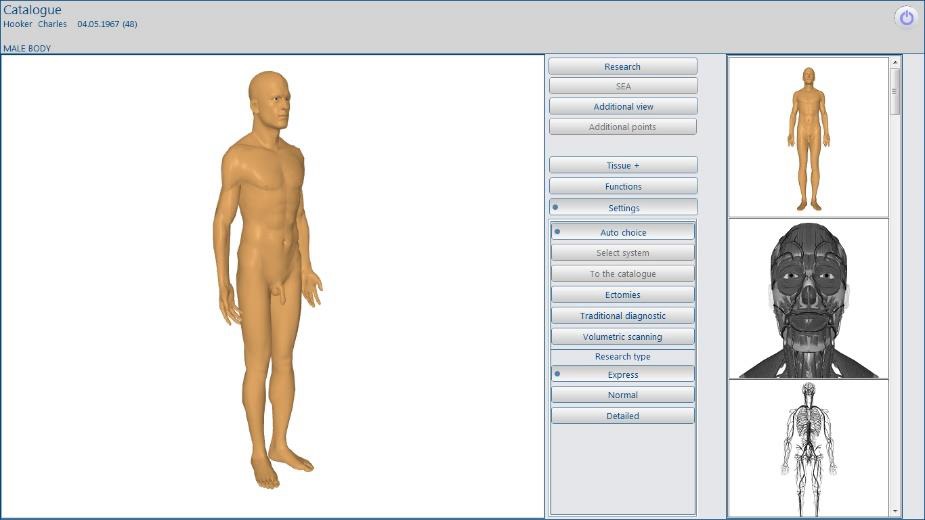
| Intruder.software |
Metatron Hospital
Metatron Intruder
Metatron Well Being
Areas of diagnosis Diagnostic results Therapies Software REMOTE Diagnostics REMOTE Therapies Food |
METATRON REMOTE® Health Diagnostic Therapy System
Metatron Intruder Upgraded By Medicomat Ltd For Remote Mode
Diagnostic results
STANDARD DIAGNOSTIC PROCEDURE USING THE HSS "METATRON":
What is the duration of the diagnostic process?
The express research type takes approximately 15-20 minutes and focuses on analyzing topographic images and models to identify any pathological changes present.
For standard research, it typically takes around 30-40 minutes. This mode allows for the identification of mature processes and the study of individual biological structures during functional and prenosological changes in the organism.
The detailed type of research requires 60-90 minutes and provides a comprehensive assessment of the structure of all biological formations, including chromosomes and the genomic apparatus. This type of research is particularly useful for identifying hereditary disorders and conducting high-quality scientific research.

The scanning process for obtaining information about a specific state of a biological object is conducted using a trigger sensor. This non-contact method captures subtle signal fluctuations extracted from the average noise characteristics of fields. The resulting digital sequence is processed by a microprocessor and transmitted to a computer via an interface cable. The study results are then displayed on a monitor screen in the form of 4D images, which are labeled with a color-coded 12-point Fleindler scale.
During the analysis phase, the intelligent menu and the visualization system of three-dimensional models allow for a detailed examination of specific organs down to their subcellular and molecular structure. Additionally, the 4D-TISSUE system enables the visualization of lesions from desired angles. Each organ and cell exhibit specific vibrations, which are recorded in the computer memory and can be displayed as graphs reflecting the information exchange condition of the organ or tissue. Pathological processes also have their unique graphs.

A multitude of pathological processes are stored in the computer's memory, taking into consideration factors such as severity, age, sex, and other variables. By extracting frequency characteristics from a biological object, the research equipment can compare them spectrally to reference processes (healthy tissues, pathologically altered tissues, infectious agents) and identify the closest pathological process or a tendency towards its occurrence. In cases of combined processes, the virtual diagnostics mode enables the differential diagnosis of each process.
Analyzing the graphs obtained from the examined patient allows for an assessment of the nature of the process and the quality factor of specific tissues.

In conclusion, the "SmartReport" function automatically generates a conclusion regarding the patient's health. The program automatically selects images displaying significant pathological changes in tissues and evaluates the activity of pathological agents. v Furthermore, it is possible to independently select the program for generating the protocol - Express, Standard, or Detailed - each varying in the level of detail. The most detailed program allows for the inclusion of a diet plan, a comprehensive description of prescribed medications, and images of standards from various groups such as Lithotherapy, Phytotherapy, Bacteria, Helminths, and more.
For follow-up purposes, the patient can undergo a re-diagnostic procedure after receiving treatment or preventive measures to assess their effectiveness.

Based on the diagnostic results, the program automatically generates one of the following conclusions regarding the patient's health: Express, Standard, or Detailed, each differing in the level of detail. The most detailed program enables the formation of a protocol that includes a diet plan, a comprehensive description of prescribed medications, and images of standards from various groups such as Lithotherapy, Phytotherapy, Bacteria, Helminths, and more.
Detailed report
Standard report
Express report
The volume of the protocol, depending on the chosen variant of its formation, ranges from 10 to 50 pages.
Sample report (pdf)